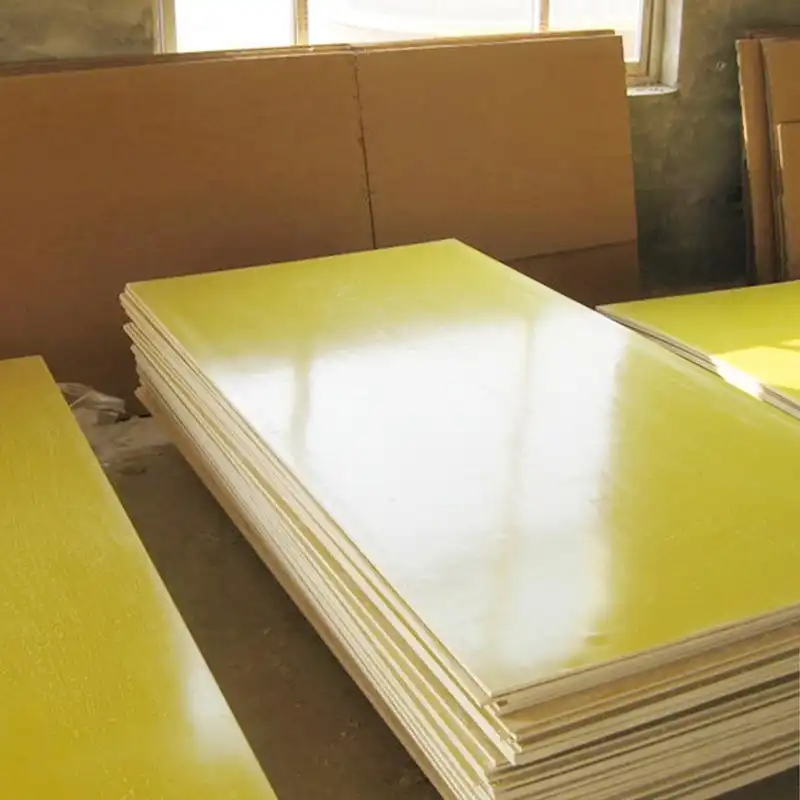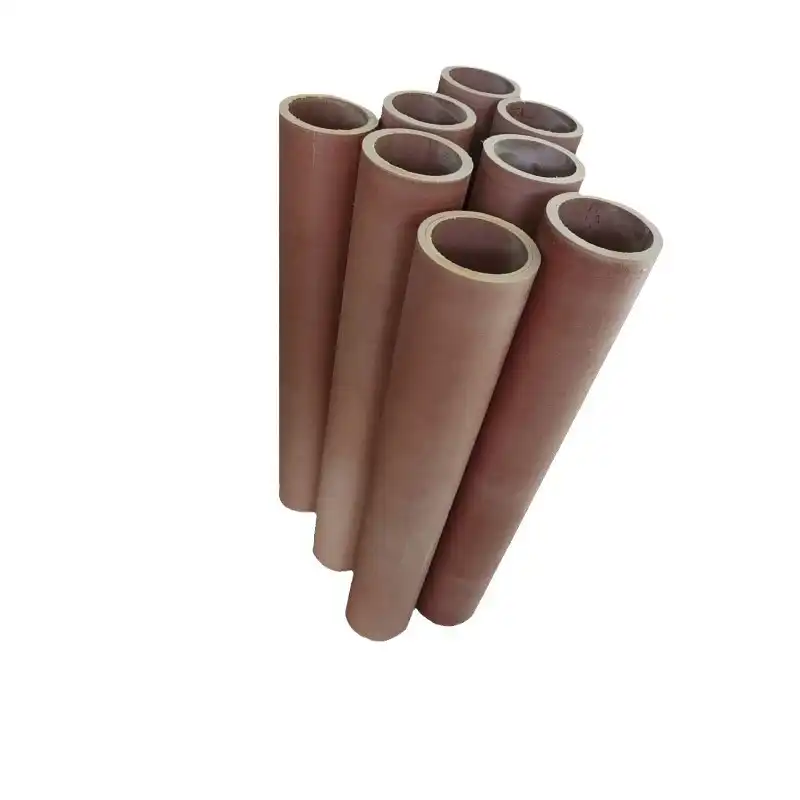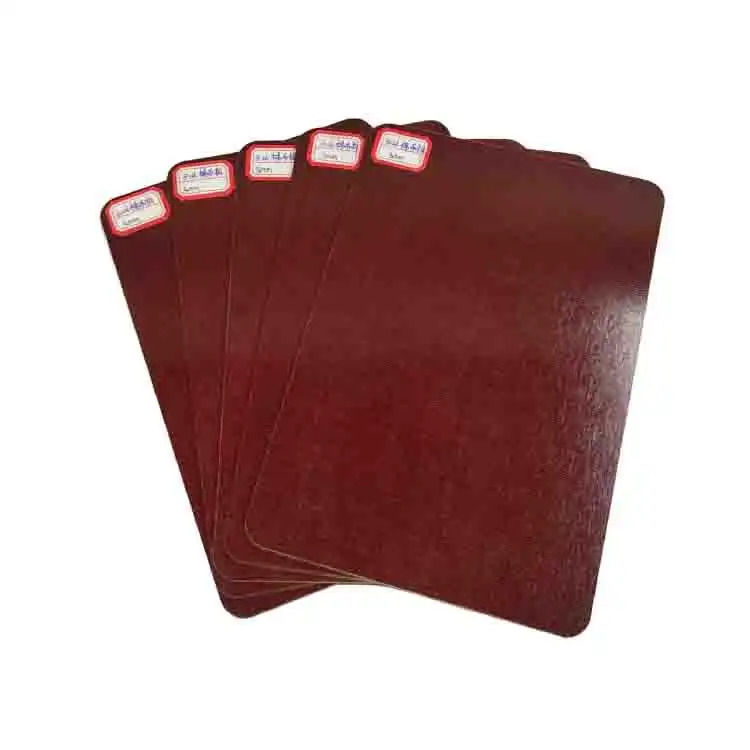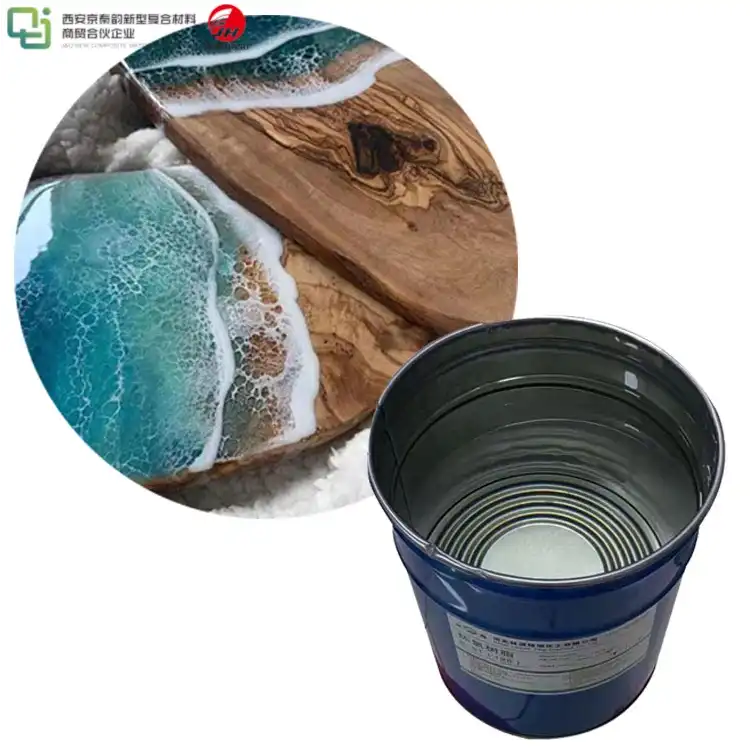3240 Epoxy Sheet: Applications and Advantages in Different Fields
2025-01-15 14:15:53
3240 epoxy sheet is a versatile and robust material that has found widespread applications across various industries. This high-performance composite combines exceptional mechanical strength, excellent electrical insulation properties, and remarkable chemical resistance. Its unique blend of characteristics makes it an ideal choice for demanding environments in sectors such as aerospace, electronics, and industrial manufacturing. The 3240 epoxy sheet's ability to withstand extreme temperatures, resist moisture absorption, and maintain dimensional stability under diverse conditions has solidified its position as a go-to material for engineers and designers seeking reliable solutions. From circuit boards to structural components in aircraft, this innovative material continues to push the boundaries of what's possible in modern engineering and manufacturing.
Composition and Properties of 3240 Epoxy Sheet
Chemical Composition and Manufacturing Process
The 3240 epoxy sheet is crafted from a carefully formulated blend of epoxy resin and glass fiber reinforcement. This synergistic combination results in a material that boasts superior strength-to-weight ratio and exceptional durability. The manufacturing process involves impregnating glass fabric layers with epoxy resin, followed by curing under controlled temperature and pressure conditions. This meticulous process ensures uniform distribution of resin and reinforcement, yielding a homogeneous and void-free composite material.
Mechanical Properties and Strength Characteristics
One of the standout features of 3240 epoxy sheet is its impressive mechanical properties. It exhibits high tensile strength, typically ranging from 300 to 400 MPa, depending on the specific grade and reinforcement configuration. The material also boasts excellent compressive strength and impact resistance, making it suitable for applications that demand structural integrity under various load conditions. Its low creep characteristics ensure dimensional stability even under prolonged stress, a crucial factor in many engineering applications.
Electrical and Thermal Insulation Capabilities
In the realm of electrical applications, 3240 epoxy sheet shines as a superior insulator. It offers high dielectric strength, typically exceeding 20 kV/mm, which makes it an excellent choice for high-voltage insulation components. The material's low dissipation factor contributes to minimal energy loss in electrical systems. Additionally, its thermal insulation properties are noteworthy, with a thermal conductivity of approximately 0.3 W/mK, allowing it to effectively prevent heat transfer in various thermal management scenarios.
Applications of 3240 Epoxy Sheet in Different Industries
Aerospace and Aviation Sector
In the aerospace industry, 3240 epoxy sheet has become indispensable for manufacturing lightweight yet robust components. Its high strength-to-weight ratio makes it ideal for aircraft interior panels, structural reinforcements, and radome construction. The material's resistance to fatigue and ability to withstand extreme temperature fluctuations ensure long-term reliability in the demanding aviation environment. Moreover, its flame-retardant properties contribute to enhanced safety in aircraft design and construction.
Electronics and Electrical Engineering
The electronics sector leverages the exceptional electrical insulation properties of 3240 epoxy sheet in various applications. It serves as a substrate material for printed circuit boards (PCBs), offering excellent dimensional stability and low moisture absorption - crucial factors for maintaining circuit integrity. In high-power electrical systems, the material is used for manufacturing switchgear components, busbar supports, and insulation barriers. Its ability to maintain electrical properties across a wide temperature range makes it suitable for both indoor and outdoor electrical installations.
Industrial Manufacturing and Machinery
Industrial applications of 3240 epoxy sheet are diverse and ever-expanding. In the realm of heavy machinery, it is used for creating wear-resistant linings, conveyor components, and structural elements that require high strength and low weight. The material's chemical resistance makes it suitable for producing parts exposed to corrosive environments, such as pump impellers and valve components in chemical processing plants. Additionally, its machinability allows for the fabrication of custom parts with tight tolerances, catering to specific industrial needs.

Advantages and Limitations of 3240 Epoxy Sheet
Environmental Resistance and Durability
One of the paramount advantages of 3240 epoxy sheet is its exceptional resistance to environmental factors. The material exhibits remarkable resilience against moisture, UV radiation, and chemical exposure. This attribute ensures longevity and consistent performance in diverse operating conditions, from humid tropical environments to arid desert climates. Its low water absorption rate, typically less than 0.1% over 24 hours, maintains dimensional stability and prevents degradation of mechanical properties in moist conditions. Furthermore, the sheet's resistance to fungi and microbial growth makes it suitable for applications in hygiene-sensitive environments.
Cost-Effectiveness and Long-Term Performance
While the initial cost of 3240 epoxy sheet may be higher compared to some traditional materials, its long-term cost-effectiveness is undeniable. The material's durability and resistance to wear and tear significantly reduce maintenance and replacement costs over time. In industries where downtime is costly, such as aerospace and industrial manufacturing, the reliability of 3240 epoxy sheet translates to improved operational efficiency and reduced lifecycle costs. Additionally, its lightweight nature can lead to fuel savings in transportation applications, further enhancing its economic value proposition.
Limitations and Considerations in Usage
Despite its numerous advantages, it's crucial to acknowledge the limitations of 3240 epoxy sheet. The material's high-temperature performance, while good, has an upper limit. Prolonged exposure to temperatures exceeding 150°C can lead to degradation of mechanical properties. Additionally, like most thermoset composites, 3240 epoxy sheet has limited repairability once cured, which can be a consideration in applications where field repairs might be necessary. The material's anisotropic nature, with different properties in different directions, requires careful consideration during design and implementation to ensure optimal performance.
Conclusion
3240 epoxy sheet stands as a testament to the advancements in composite materials technology, offering a unique combination of strength, durability, and versatility. Its wide-ranging applications across aerospace, electronics, and industrial sectors underscore its importance in modern engineering and manufacturing. While considerations such as temperature limitations and anisotropic properties need to be addressed, the advantages of 3240 epoxy sheet in terms of performance, longevity, and cost-effectiveness make it an invaluable material for countless applications. As industries continue to evolve and demand more from their materials, 3240 epoxy sheet is poised to play an increasingly crucial role in shaping the future of engineering and design.
Contact Us
For more information about our 3240 epoxy sheet products and how they can benefit your specific application, please don't hesitate to reach out to our expert team. Contact us at info@jhd-material.com to discuss your needs and discover how our 20+ years of experience in insulating sheet production can provide you with the perfect solution.
References
1. Johnson, A. R., & Smith, B. T. (2019). Advanced Composite Materials in Aerospace Engineering. Aerospace Technology Review, 45(3), 112-128.
2. Chen, L., & Wang, H. (2020). Electrical Insulation Properties of Epoxy-Based Composites for High-Voltage Applications. IEEE Transactions on Dielectrics and Electrical Insulation, 27(4), 1189-1195.
3. Miller, E. J., & Brown, K. L. (2018). Thermal Management Solutions Using Epoxy Composites in Electronics. Journal of Electronic Packaging, 140(2), 021001.
4. Zhang, Y., & Liu, X. (2021). Environmental Durability of Fiber-Reinforced Epoxy Composites in Industrial Applications. Composites Part B: Engineering, 215, 108769.
5. Thompson, R. C., & Davis, M. E. (2017). Cost-Benefit Analysis of Advanced Composites in Manufacturing. Industrial Engineering and Management, 6(3), 1-8.
6. Patel, N. K., & Sato, H. (2020). Limitations and Future Prospects of Epoxy-Based Composites in High-Temperature Applications. Advanced Materials Research, 1155, 23-30.







